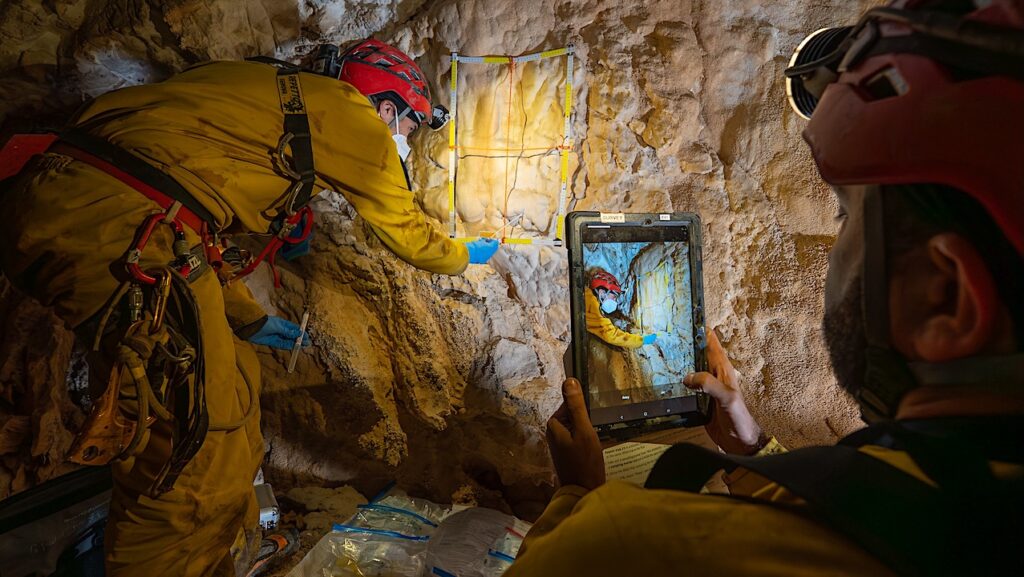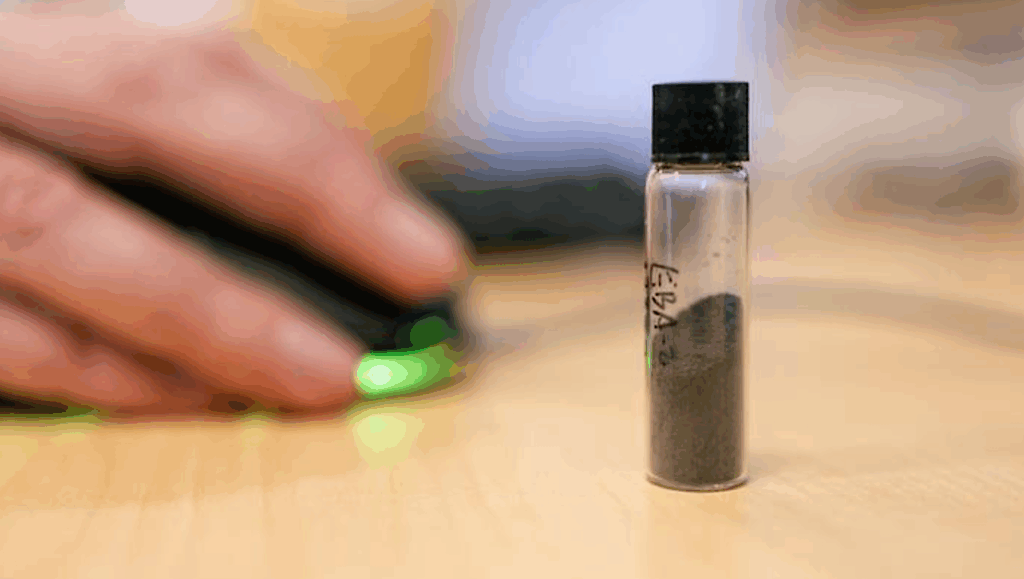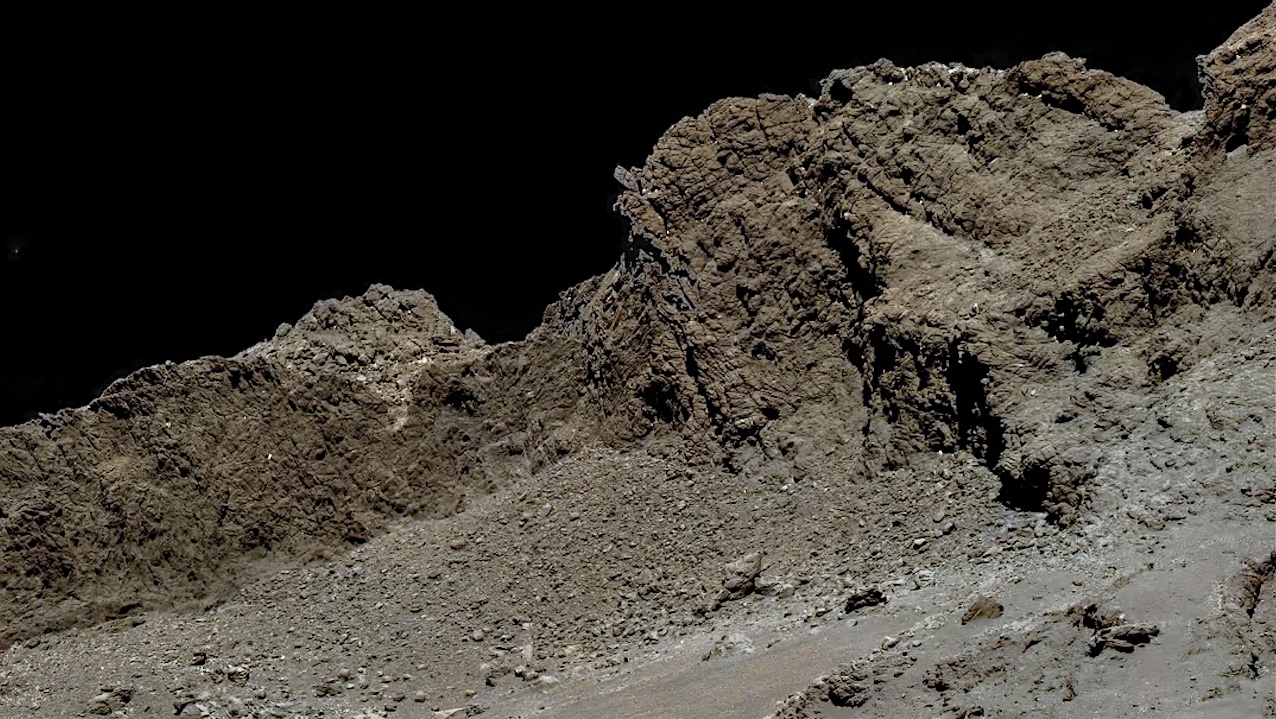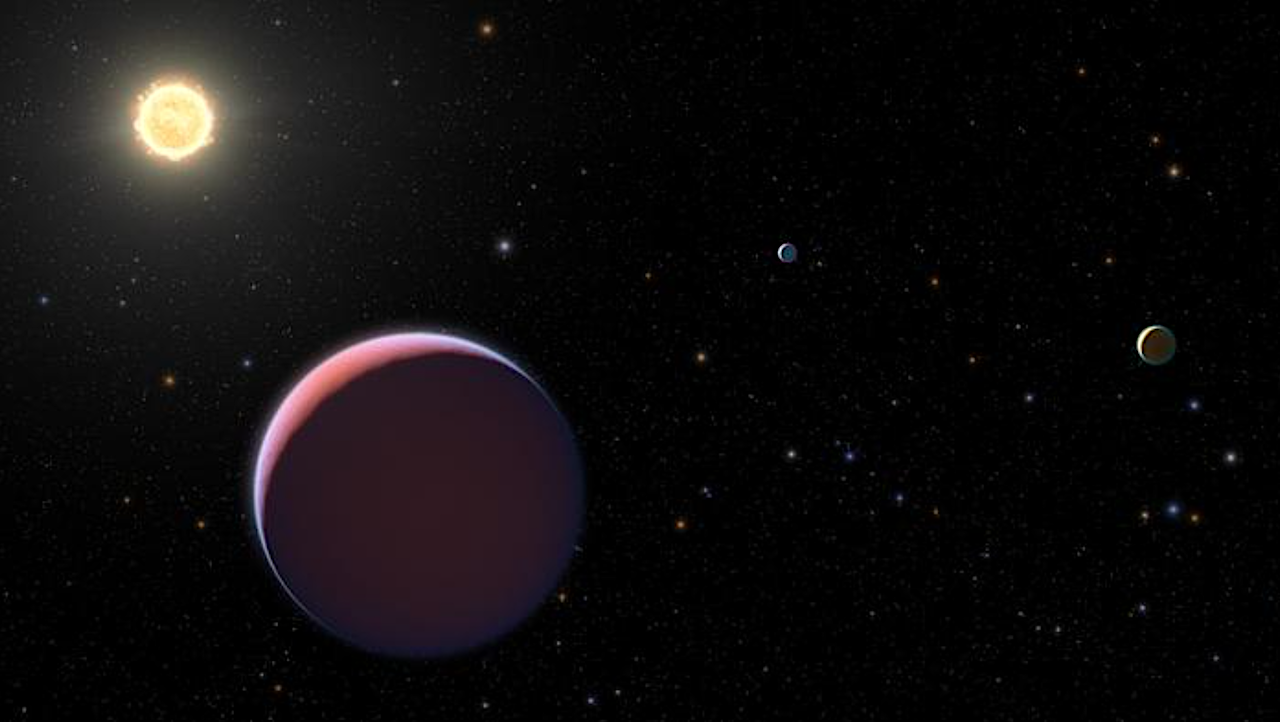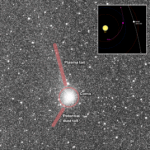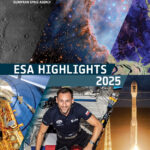Now Reading: Tricorder Tech: Hypespectral Imaging Used To Explore Bird Plumage Coloration
-
01
Tricorder Tech: Hypespectral Imaging Used To Explore Bird Plumage Coloration
Tricorder Tech: Hypespectral Imaging Used To Explore Bird Plumage Coloration
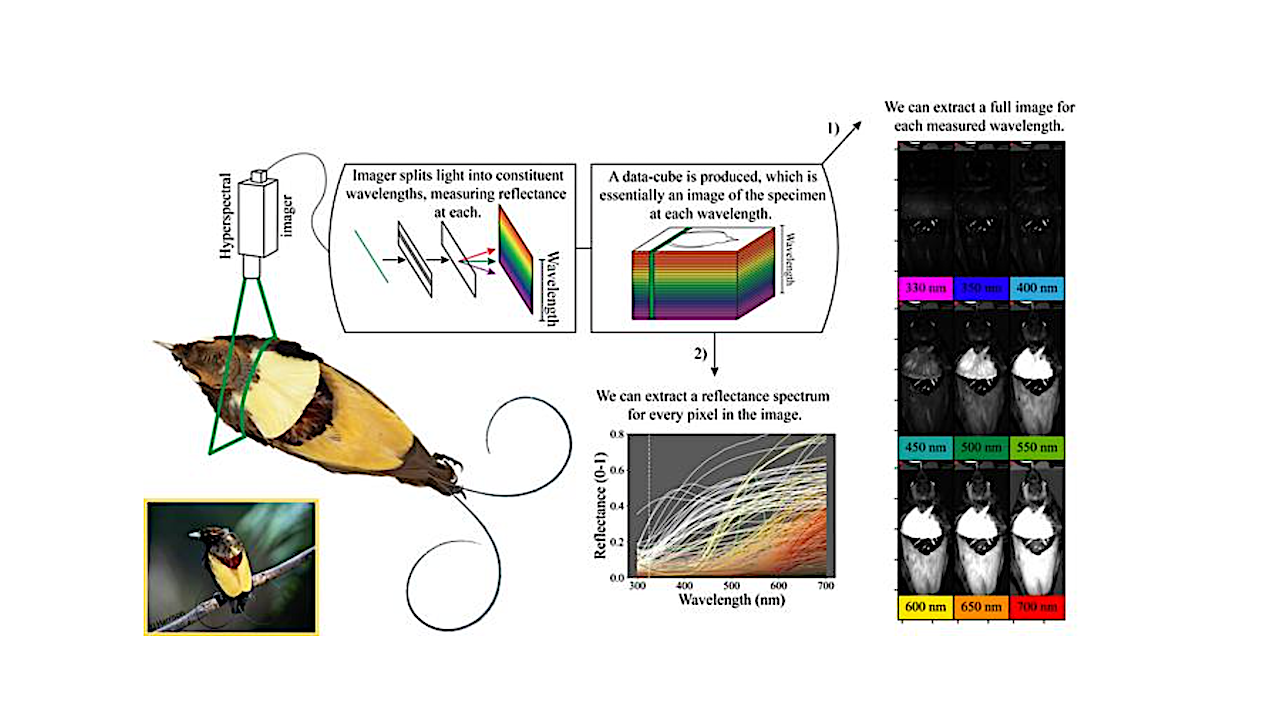

Editor’s note: Having a compact Hyperspectral imaging capability could be of great use to robotic and human Astorbiology explorers as they examine new forms of life as well as the surrounding non-living environment. How we use the tools we’ve developed on Earth (as described below) should serve as a wonderful precursor to how we develop these future exploratory instruments i.e. “tricorders“.
If you search for a definition for tricorder you’ll find things like this from Wikipedia: “A tricorder is a fictional handheld sensor that exists in the Star Trek universe. The tricorder is a multifunctional hand-held device that can perform environmental scans, data recording, and data analysis; hence the word “tricorder” to refer to the three functions of sensing, recording, and computing.”
You’ll also see the term openly used for contemporary medical devices that are used to do quick tests of someone’s health or some mineral’s composition. In Star Trek a physician usually had a smaller device that was connected to a larger tricorder to scan humans for their health status.
In an era of ubiquitous smartphones we’re now expecting more and more functionality with every new model that is released. As we move closer to sending humans to other worlds to search for life, such a device that falls under the general “tricorder” classification would certainly come in handy. These Astrobiology Away Team sorties will find it very useful to look inside the things that they observe during their traverses – living and not living.
Animals showcase a remarkable diversity of colors and patterns, from the shimmery appearance of a peacock’s tail to the distinctive rosettes on a jaguar’s fur. Quantifying animal color has been a longtime goal of evolutionary biologists, who aim to understand how color evolved over time—and the physical and genetic mechanisms involved.
Ultimately, studying animal color is important because it can reveal how evolutionary forces, such as natural and sexual selection, favor certain traits over others. However, fully capturing animal color is challenging because researchers must choose between high spatial resolution (as in traditional photography, which captures information in a limited number of color channels) and high spectral resolution (as in spectrophotometry, which captures a reflectance spectrum at a single point).
Evolutionary biologists at Princeton University recently used hyperspectral imaging, a state-of-the-art tool that measures detailed spectral information at each pixel in an image, to investigate avian plumage color. Hyperspectral imaging works by separating the light spectrum into a series of narrow bands, each corresponding to a small range of wavelengths. Essentially, an image is taken in each of these narrow bands, generating a stack of images (or a “data-cube”) that includes both spatial and spectral information. Each pixel in the data-cube contains detailed information about the wavelengths of light reflected.
“Hyperspectral imaging offers the best of both worlds,” explained Dr. Mary Caswell Stoddard, a professor in the Department of Ecology and Evolutionary Biology and the study’s senior author. “Researchers can capture comprehensive reflectance data for an entire specimen in a matter of minutes, opening up new possibilities for the study of animal color.”
Hyperspectral imaging, often used in agricultural and medical applications, has been used in a handful of studies on animal color, but uptake has generally been slow. Hyperspectral data can be unwieldy—and commercial cameras are expensive and rarely capture all of the wavelengths relevant to animals.

Hyperspectral imaging data captures spectral and spatial information. (a) Montage of selected slices across the spectral dimension of the hyperspectral data-cube, each indicating in grayscale the reflectance of one specimen (Magnificent bird-of-paradise dorsal view) at the wavelength indicated in the inset colored boxes. The blue, orange, green, and red dots indicate the plumage regions sampled (see also b and c). Note that intervals of 20 nm were chosen for plotting; the actual data were acquired in intervals of ~2.5 nm. (b) RGB image of the dorsal view of the specimen generated using 3 select slices (425 nm, 550 nm, 600 nm) with plumage regions sampled again indicated with colored dots. (c) Plot of the reflectance of each of the plumage samples shown in (a) and (b); each pixel in a hyperspectral image corresponds to a full reflectance spectrum. The dotted vertical line indicates the lower sensitivity bound of the hyperspectral image; reflectance values below this wavelength were extrapolated. (d) The birds-of-paradise measured in this study reflect relatively little ultraviolet light (300–400 nm). For comparison, shown here are hyperspectral images of the lateral view of a Gouldian finch (Chloebia gouldiae), which reflects substantial ultraviolet light in the breast patch. The data underlying this figure can be found at https://doi.org/10.5061/dryad.j0zpc86nf [99]. — PLOS Biology
“In our study, we developed a new computational pipeline—a series of step-by-step analyses—to show how researchers can obtain and study hyperspectral data from museum specimens. We published all the hyperspectral data we collected, as well as all of the code we developed, to aid others in replicating and building on our methods,” said Dr. Ben Hogan, an associate research scholar and the study’s lead author.
Hogan and Stoddard used a commercial camera sensitive to wavelengths ranging from 325 to 700 nanometers, which largely corresponds to the spectrum visible to birds (typically 300 to 700 nanometers), including the ultraviolet range (300 to 400 nanometers).
Many birds have feathers that reflect ultraviolet light. “Using hyperspectral imaging, we can easily capture detailed ultraviolet images, sometimes revealing entire patches of ultraviolet color that are invisible to humans,” said Stoddard.
To demonstrate the power of hyperspectral imaging in animal color research, Hogan and Stoddard focused on the birds-of-paradise. These charismatic birds are native to New Guinea and nearby regions and are known for their vibrant plumage and elaborate courtship displays. The rare hybrid King of Holland’s bird-of-paradise was the key subject of interest. Only about 25 male museum specimens are known to exist worldwide, with 12 specimens held by the American Museum of Natural History (AMNH) in New York City. The hybrid, a cross between the King and Magnificent birds-of-paradise, has plumage that appears to combine features of its two parent species.
By collecting and analyzing hyperspectral data from specimens borrowed from the AMNH, Hogan and Stoddard were able to quantify the degree to which the hybrid’s appearance was truly intermediate—that is, a precise blend of colors from its parent species.
“We were surprised to discover that for several plumage patches—even those colored by very specific micro- and nano-structures—the hybrid’s color really does resemble a mixture of those from the parental phenotypes,” said Hogan.
Hogan and Stoddard also integrated hyperspectral imaging with photogrammetry, a technique that stitches together hundreds of traditional images taken from different angles, to produce virtual 3D models of the bird specimens. These 3D models are valuable because they reveal how an animal’s body shape and morphology interact with its coloration. They also provide detailed digital records of specimens, which can be easily accessed by researchers and the public—and used in a variety of morphometric analyses.
Hyperspectral imaging will be a powerful tool for studying camouflage, warning coloration, mimicry and courtship displays in birds—and beyond. The technique is ideal for investigating other colorful taxonomic groups, such as butterflies and beetles. In the future, 3D models integrated with hyperspectral data could be animated to explore how motion influences signal design.
“We imagine that hyperspectral imaging, combined with 3D modeling, could become the new ‘gold standard’ for many studies of animal coloration, particularly those based in museum collections,” said Stoddard. “Although hyperspectral imaging of moving animals in the field remains a challenge—as does capturing iridescent color—the approach has tremendous potential.”

Illustrations of the King bird-of-paradise, the hybrid King of Holland’s bird-of-paradise, and the Magnificent bird-of-paradise. The King and Magnificent illustrations are reproduced from Levaillant and Barraband (1806, [50]), which is in the public domain. The hybrid illustration is reproduced from Gould and colleagues (1875, [51]), which is in the public domain. Middle row: Icons and colors representing the parent species and hybrid throughout the paper. Bottom row: Phylogenetic reconstruction of the subfamily Paradisaeinae, based on our replication of the phylogeny by Irestedt and colleagues [52]. All individual specimens and all genera other than Cicinnurus and Paradisaea are collapsed for clarity. See Table B and Fig J in S1 Appendix for details of the phylogenetic reconstruction. — PLOS Biology
Hyperspectral imaging in animal coloration research: A user-friendly pipeline for image generation, analysis, and integration with 3D modeling, PLOS Biology (open access)
Astrobiology
Stay Informed With the Latest & Most Important News
Previous Post
Next Post
-
 012024 in Review: Highlights from NASA in Silicon Valley
012024 in Review: Highlights from NASA in Silicon Valley -
 02Panasonic Leica Summilux DG 15mm f/1.7 ASPH review
02Panasonic Leica Summilux DG 15mm f/1.7 ASPH review -
 03How New NASA, India Earth Satellite NISAR Will See Earth
03How New NASA, India Earth Satellite NISAR Will See Earth -
 04From Polymerization-Enabled Folding and Assembly to Chemical Evolution: Key Processes for Emergence of Functional Polymers in the Origin of Life
04From Polymerization-Enabled Folding and Assembly to Chemical Evolution: Key Processes for Emergence of Functional Polymers in the Origin of Life -
 05And Thus Begins A New Year For Life On Earth
05And Thus Begins A New Year For Life On Earth -
 06Astronomy Activation Ambassadors: A New Era
06Astronomy Activation Ambassadors: A New Era -
07SpaceX launch surge helps set new global launch record in 2024












